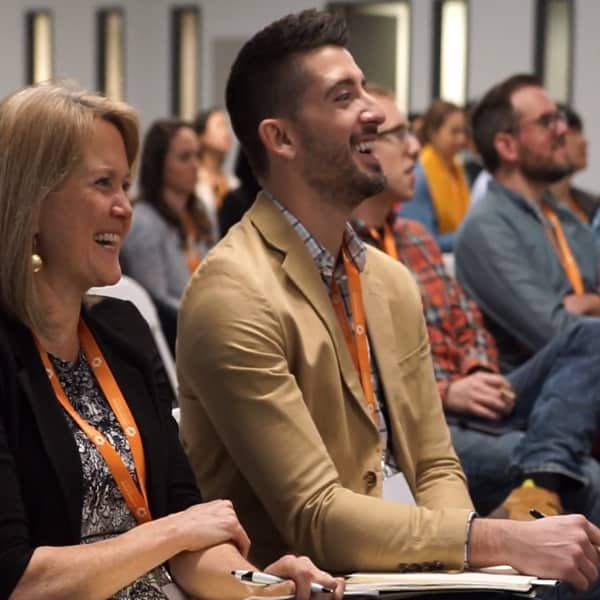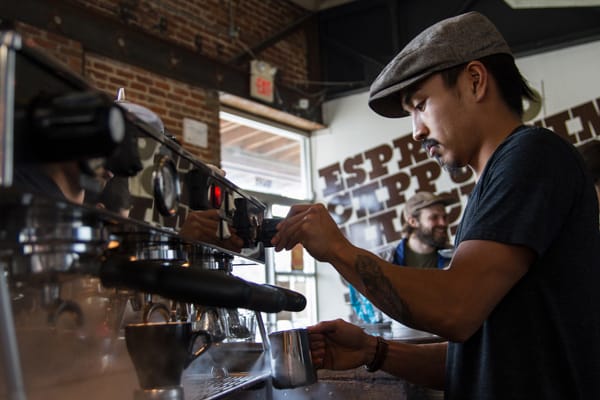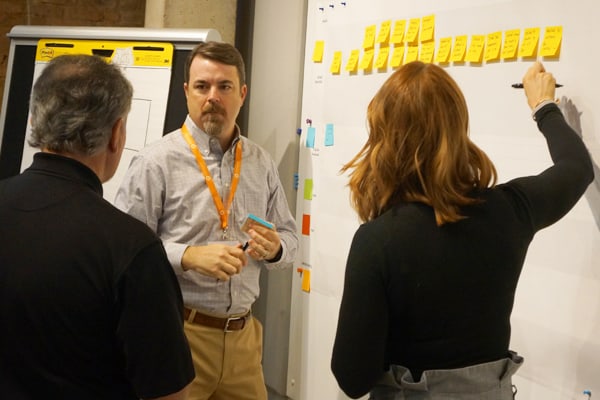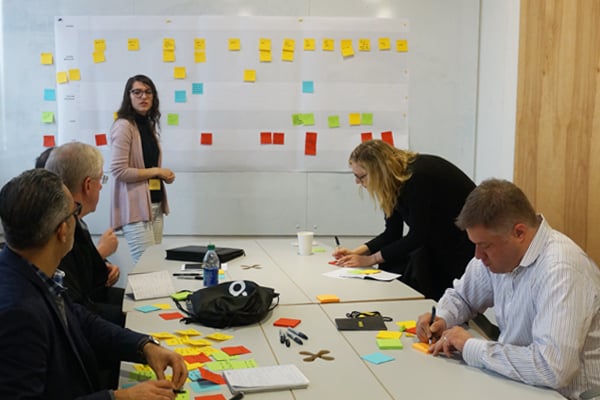Innov8rs Atlanta 2018: Recapping A Customer Experience Research Safari
Since 2011, the Maastricht, Limburg-based Innov8rs has been helping companies embrace a culture of innovation and learn the skills to do so through its global summits — conferences held across the globe from Munich to Montreal. On March 22-23, 2018, Innov8rs came to Atlanta for the first time, bringing together experts and leaders in our city to share best practices, methods, and frameworks for fostering innovation. THRIVE was asked to be a part of the 2-day event, and we offered our own insights on innovation through an interactive master class designed around our customer journey mapping framework: “Unlocking New Value Through Customer Experience Mapping.”
Customer experience research is broad; it encompasses a lot of different business aspects and consumer touchpoints. So knowing where to focus innovation efforts is often the most challenging aspect for companies. That’s what the journey framework provides — focus. It’s a filtering mechanism that helps direct inquiry and distills information surrounding an experience in a way that allows you to zero in on the opportunity. Through the workshop, we shared this structure and other customer experience research methods and helped participants apply these to some real-world scenarios, and in the span of just 3 hours, our 20 participants (broken into 4 groups) used it to go from contextual inquiry to customer journey mapping to opportunity identification.
Contextual Inquiry
We began the workshop with a customer experience research method we like to call “research safaris.” Each team was given an assignment with specific activities, and each participant, a point of view, then sent out to the “jungle” to observe and record their journeys. One group went to a Carvana dealership seeking to understand their car-buying experience; another was sent to a smoothie and juice bar Arden’s Garden. Two groups went to Octane Coffee; one was tasked with analyzing the to-go experience, the other was told to take a seat and order tea for two. Each group was also given anecdotal role-playing scenarios for each locale. At Octane, for example, the to-go group was told specifically to pay with cash for their transaction, only to learn that the store solely accepted credit (though the tip jar next to the register welcomed paper money). At Arden’s Garden, the participant was tasked to order hot tea — an item not on the menu. The employee explained they don’t sell tea, offering an alternative hot product — soup — instead.
The overarching task for all was to capture the behaviors, flows, and emotions over the course of the defined experience and through their assigned point of view, whether tasked to act as a consumer or designated to view the experience through the business’ lens. We helped the participants dial into this research process by giving them the vowel framework, AEIOU, which stands for activities, environment, interactions, objects, and users. It helps remind researchers of the information to look for, which basically translates to the who, what, when, where and why of an experience. The fun twist is that while the traditional grammar rule says AEIOU and sometimes y, with this rule it’s AEIOU and always why. Because you’re always probing for why.
Experience Mapping
The teams brought the info gathered during their research safari back to THRIVE, and the next step was to distill that data into a preliminary customer journey map. We started by looking at things like the behaviors and the doings; the moment-to-moment linear progression of events. Then we started looking at the emotional context supporting each one and started honing in on specific pains and gains, like the inconvenience when a store doesn’t take cash. Or an excellent customer service moment when an employee tries to meet a customer’s needs with an alternate product suggestion rather than sending them away empty-handed. Seeing the information aligned in this way, rather than trying to sort through disparate notes, starts to provide a complete understanding of what’s happening in a moment and why.
Opportunity Identification
After mapping the journeys, the unmet customer needs or gaps in the customer experience should become clear and, in turn, form the basis for identifying new opportunities, both big and small. We had participants position the opportunities on a quick 2×2 matrix with level of impact to the customer on the y-axis, level of effort — how easy or difficult it would be for the business to implement — on the x-axis, to pinpoint key opportunities (mobile ordering options, for example, medium impact, high effort). Being able to evaluate opportunities against one another using the same criteria, and after having been realized through the same customer experience mapping framework helps to truly prioritize them on a one-to-one scale.
The added value of the customer journey mapping framework? The information you get out of an exercise like this can be carved up a bunch of different ways. When you start categorizing and organizing information in this way, you may realize areas where you want to dig a little deeper after the initial exploration. You can then retool this framework and focus on one specific touchpoint you think has a lot of value for a quick sprint ideation around that — whether your team wants to pursue tactical opportunities or those more aspirational.
We’d say the Master Class was a great success. The format was well-received, and participants said that they’d only really seen customer experience research approached piecemeal before (having an opportunity or understanding a need), and found real value in the framework’s ability to provide a more holistic view. We were happy to host and look forward to opportunities to share our experience again! Anyone up for a Spanish research safari? Innov8rs heads to Madrid next in May!







